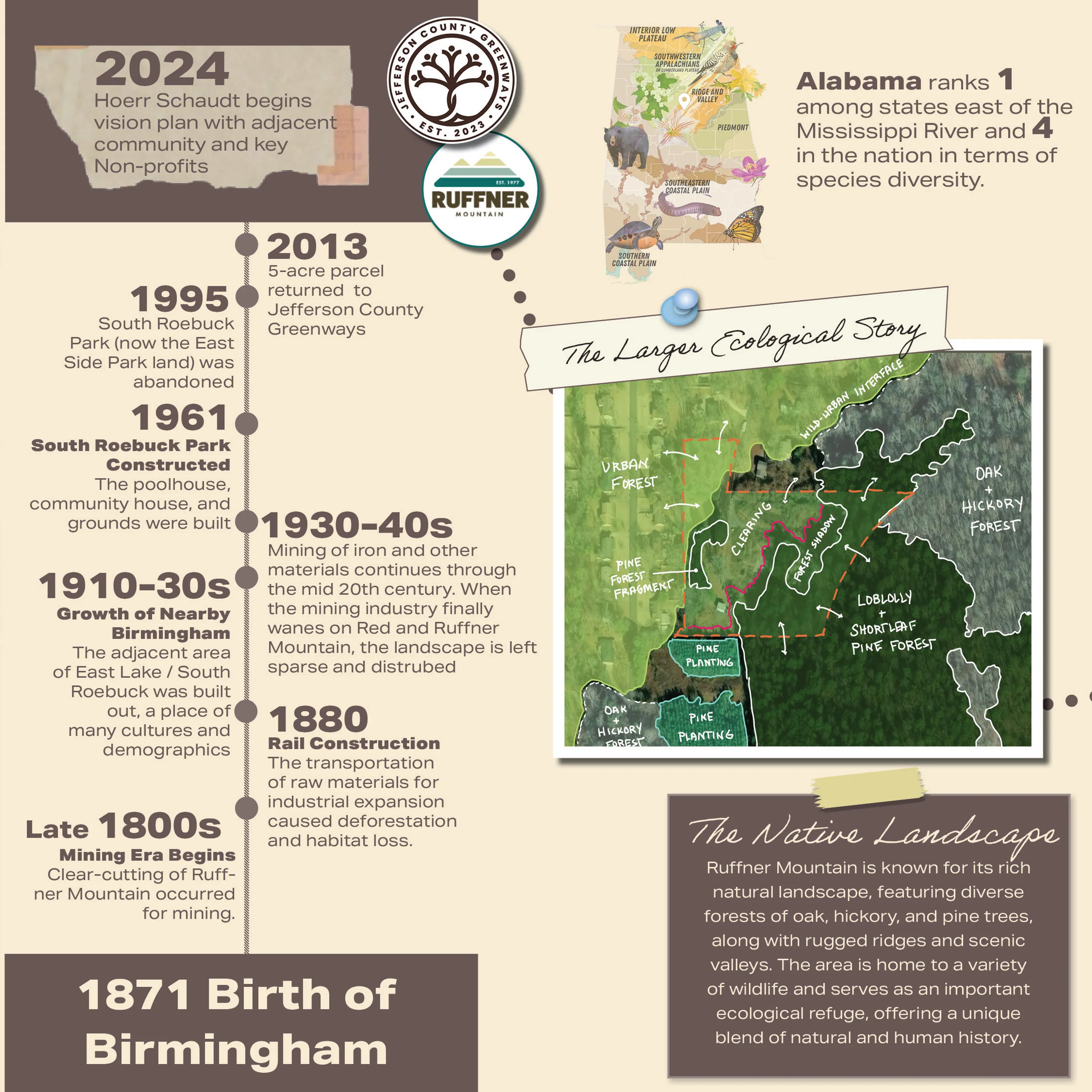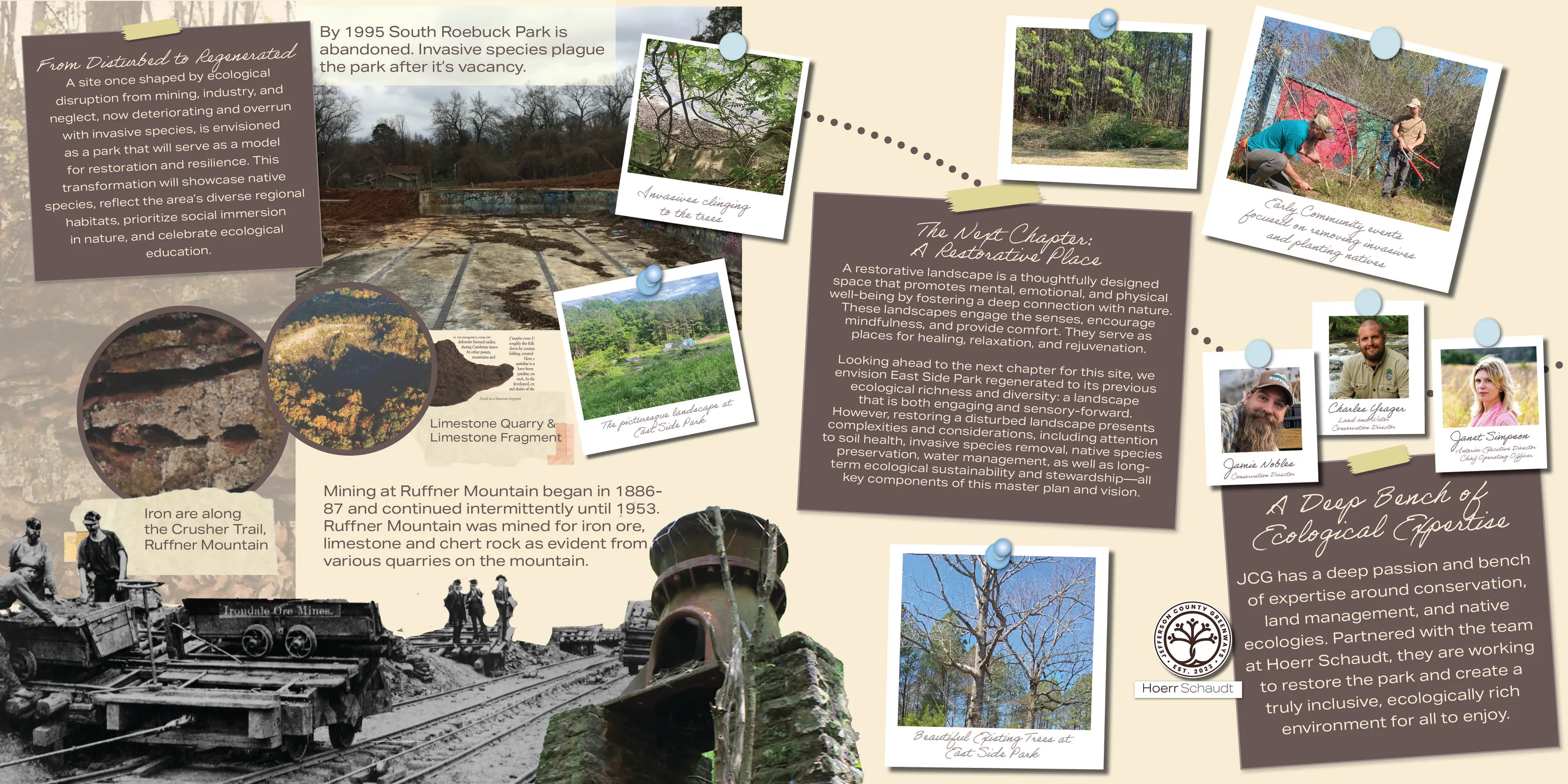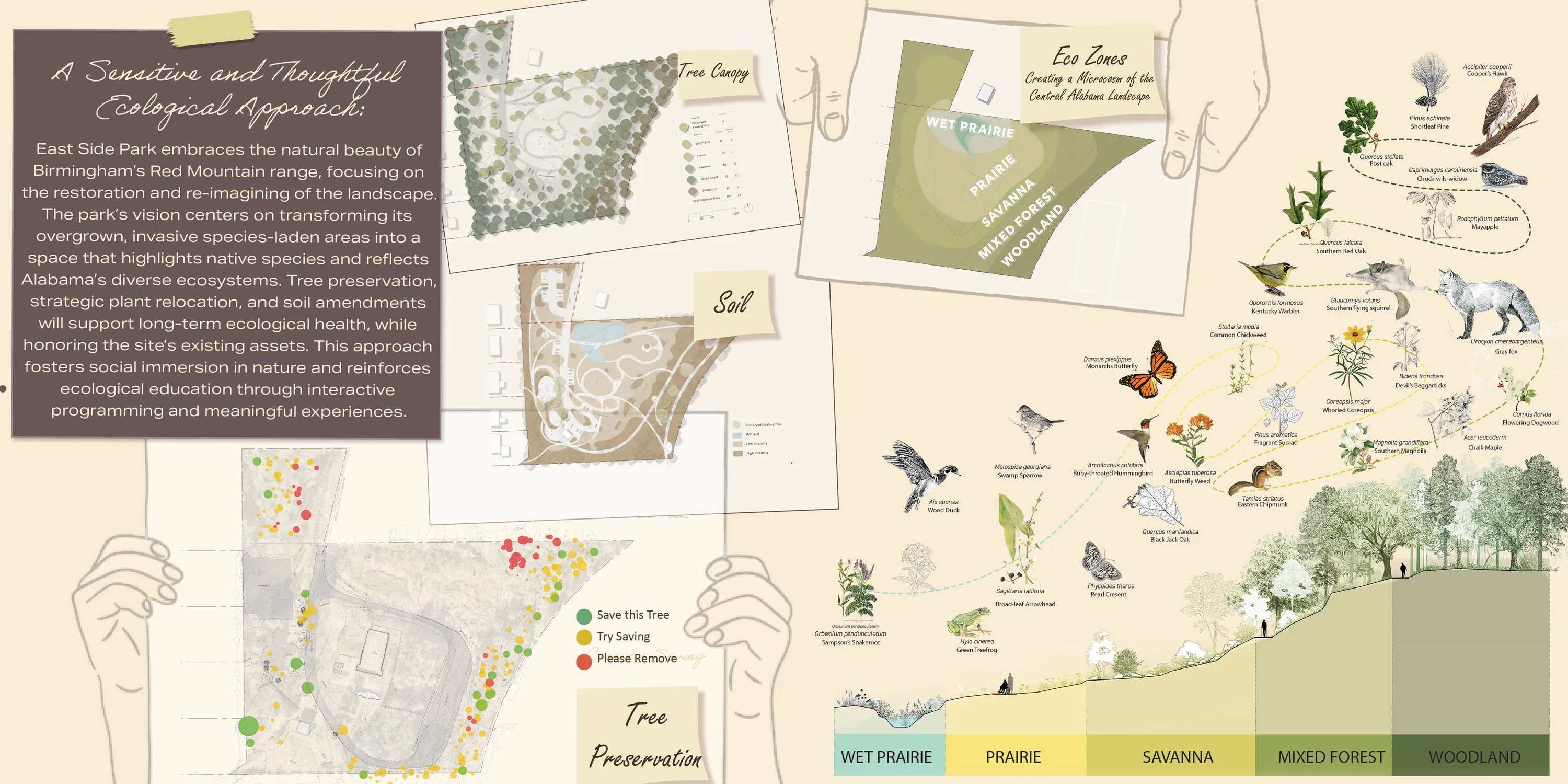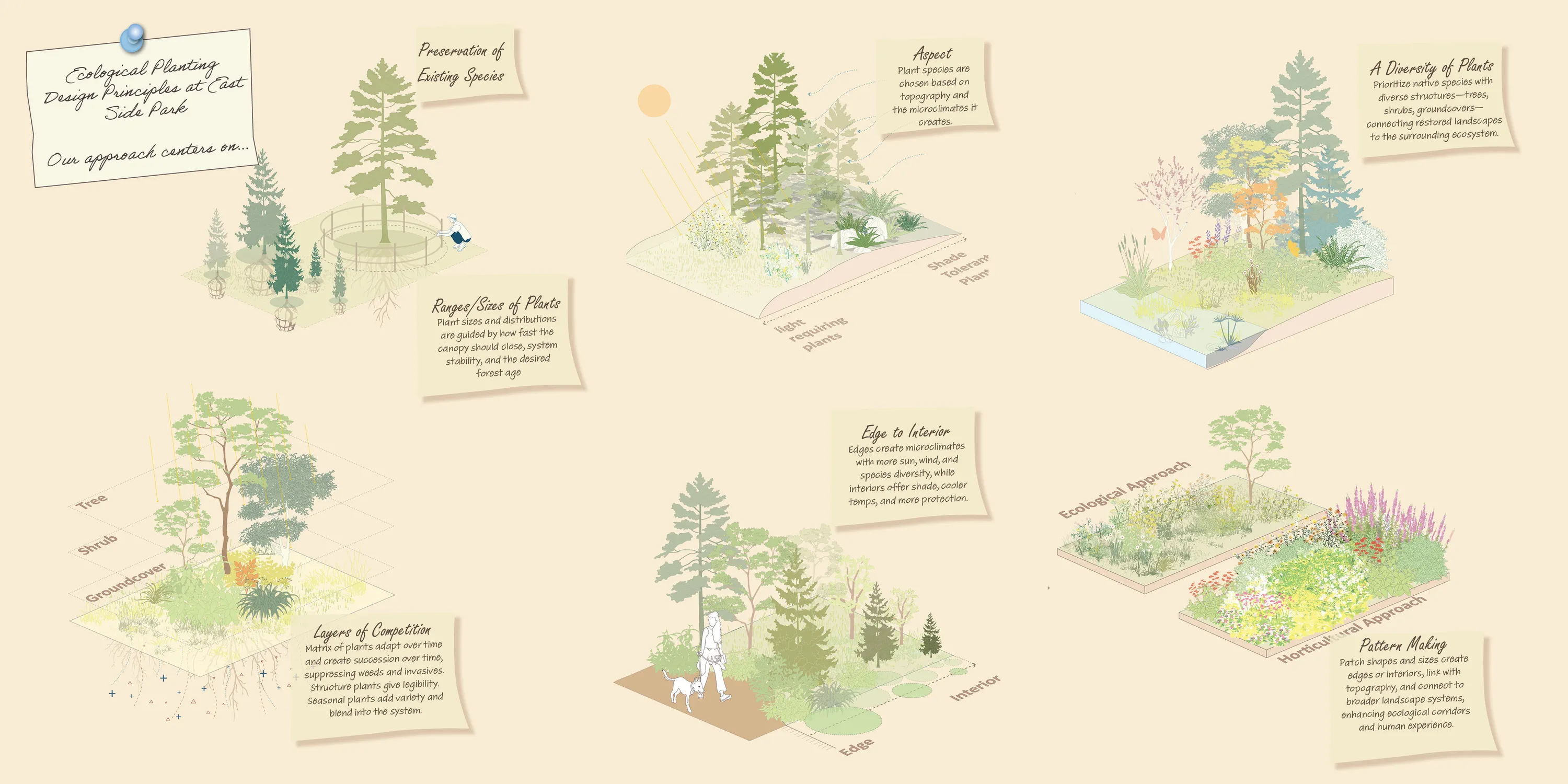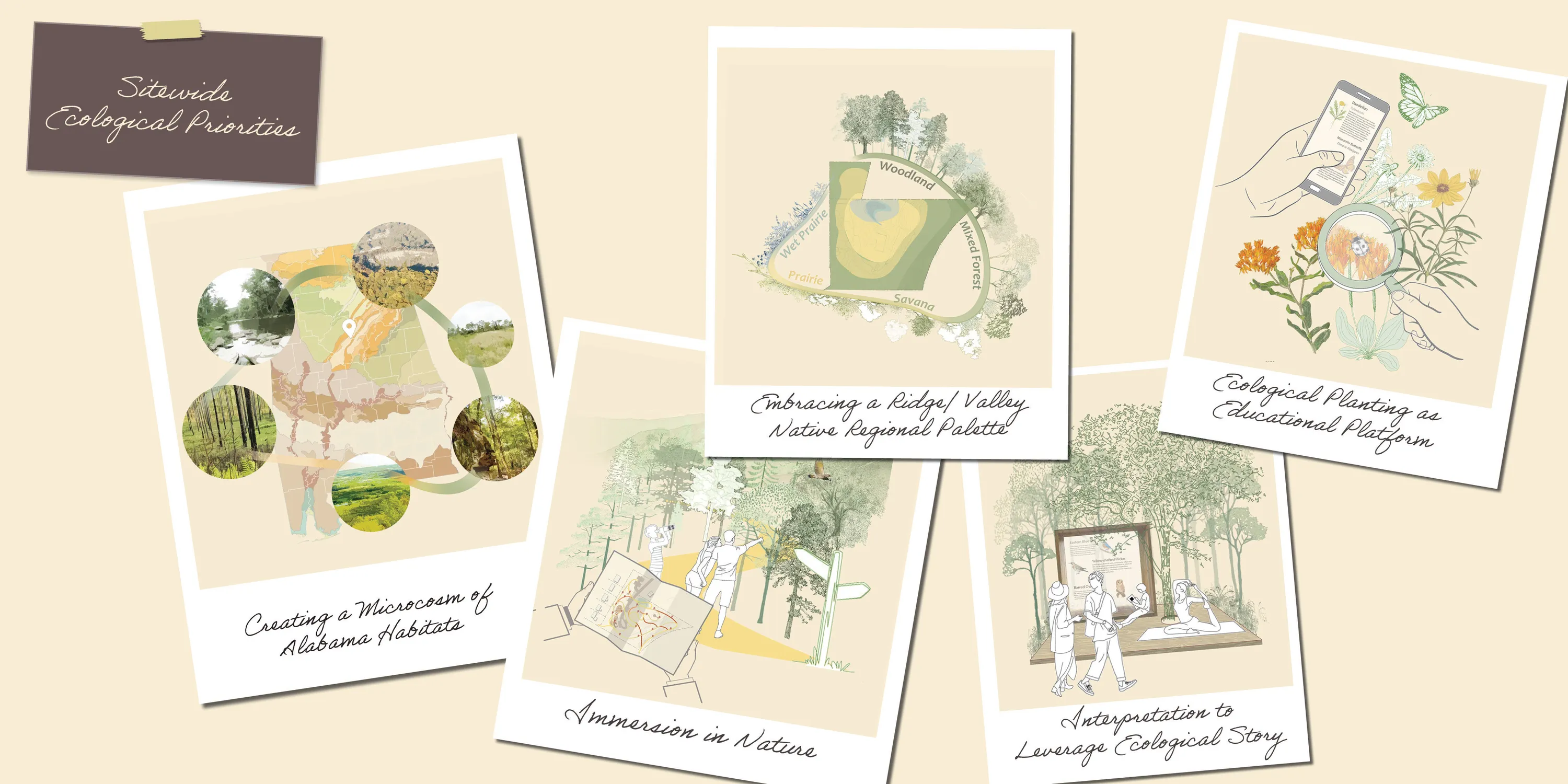The park’s design seeks to heal these wounds through an ambitious ecological restoration strategy. Over 5,000 feet of wheelchair-accessible trails weave through a mosaic of restored native habitats, including upland forests, riparian corridors, and open meadows. A diverse planting palette reintroduces native species that once thrived in the region, improving soil structure, enhancing stormwater absorption, and providing essential habitat for pollinators and wildlife. Reforestation efforts stabilize slopes, mitigate erosion, and help rebuild the site’s natural ecosystem functions.
Sustainability is woven into every aspect of East Side Park’s design. Green infrastructure elements—such as bioswales, permeable paving, and soil remediation techniques—work to manage stormwater, reduce runoff, and restore the site’s hydrological balance. Locally sourced materials and climate-adapted plantings minimize maintenance needs while reinforcing the park’s connection to Birmingham’s ecological heritage.
By acknowledging the site’s industrial past while actively restoring its natural systems, East Side Park represents a new chapter in Birmingham’s story—one that prioritizes ecological resilience, sustainability, and inclusive access to nature.
